Best compact binoculars 2025: small and lightweight binoculars for taking out during the holidays
The best compact binoculars are powerful yet small enough to slip into a pocket — just what you need for great views on the go this holiday season.

Whether you're a stargazer or a wildlife watcher, the best compact binoculars can be invaluable. You might be out and about when something in the sky catches your eye, and instead of going to the trouble of unpacking a telescope, you can just pull a pair of binoculars from your coat pocket.
We recommend doing your research now and locking in a purchase if you want to get some in time for the big holidays. Retailers sometimes offer good deals on skywatching optics in the run-up to Christmas and afterwards, so keep an eye on prices if you have been wanting to buy compact binoculars.
While compact binoculars are super handy, if you don't need your skygazing gear to be as compact, take a look at our guide to the best binoculars and best telescopes.
The quick list
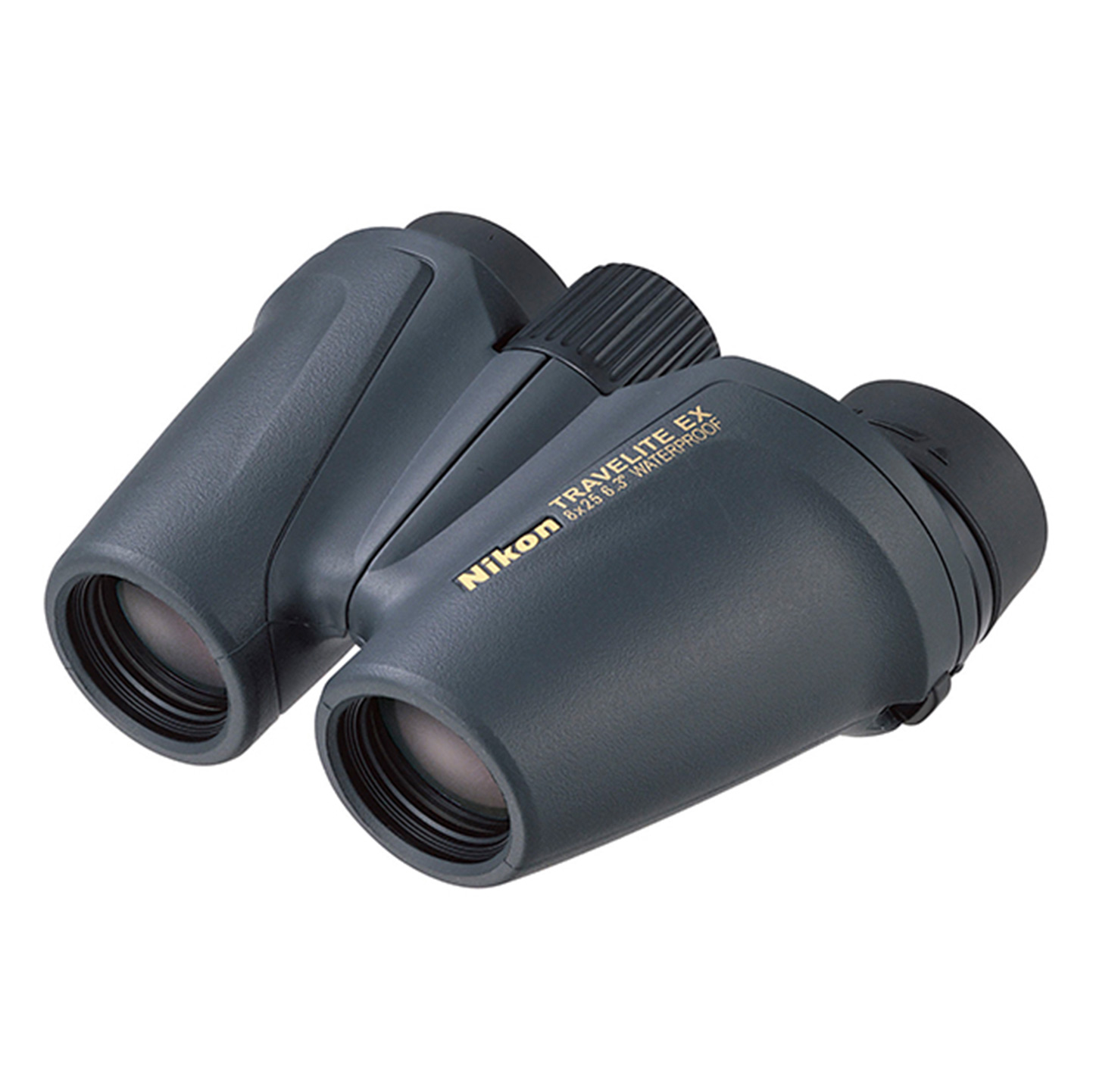
Best overall
These pocket-sized binoculars are compact and well-made, more than suitable for multi-purpose daytime use and some astronomy viewing.
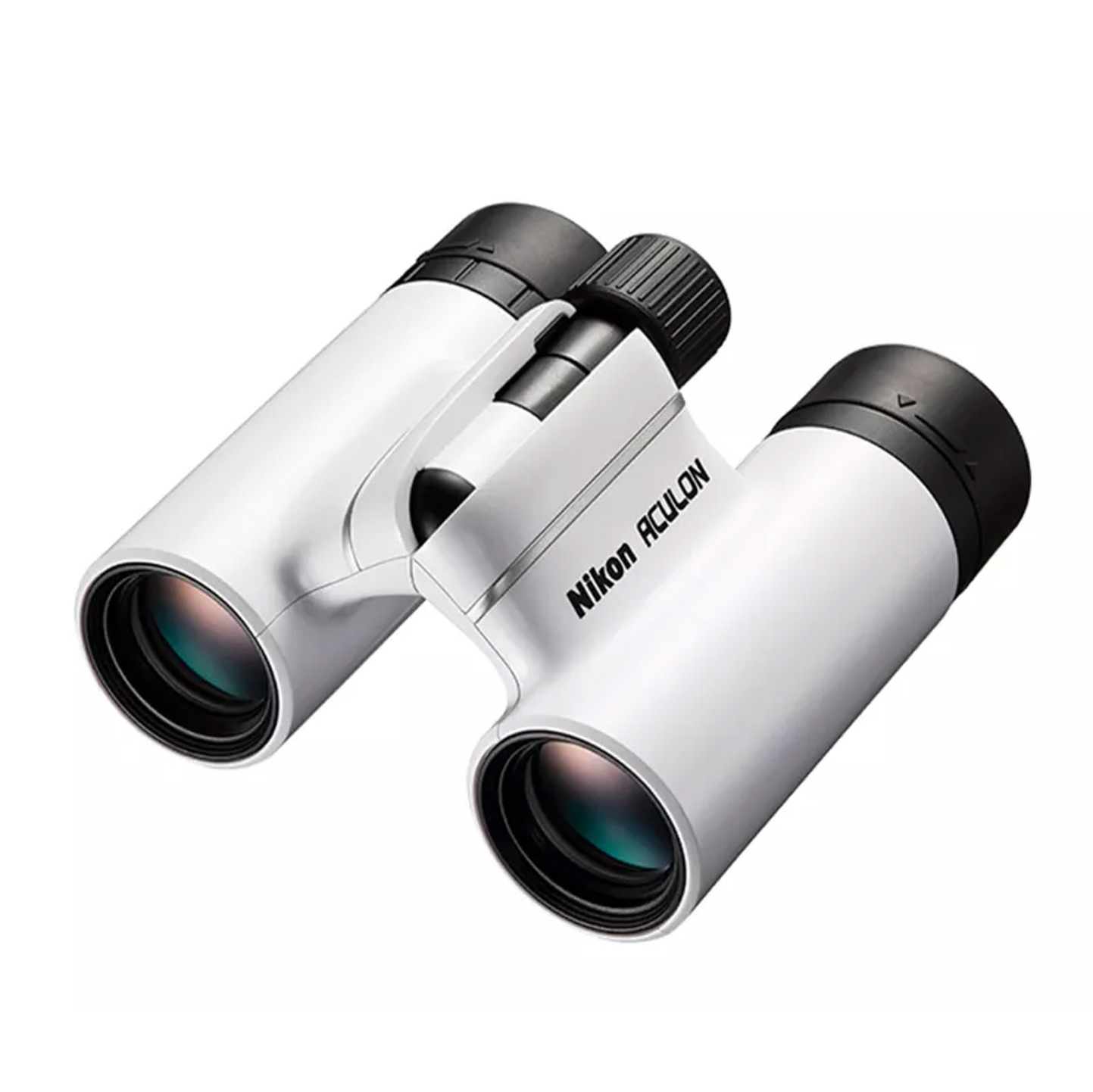
Best for portability
These small and stylish binoculars bring a model from a quality brand into the affordable range. At just 3.4 x 4.1-inches, they are easy to tuck into a pocket.

Best budget option
These 10x binoculars perform better than their 8x counterpart due to their better twilight factor (15.8 instead of 13.0), so they provide great low-light results.
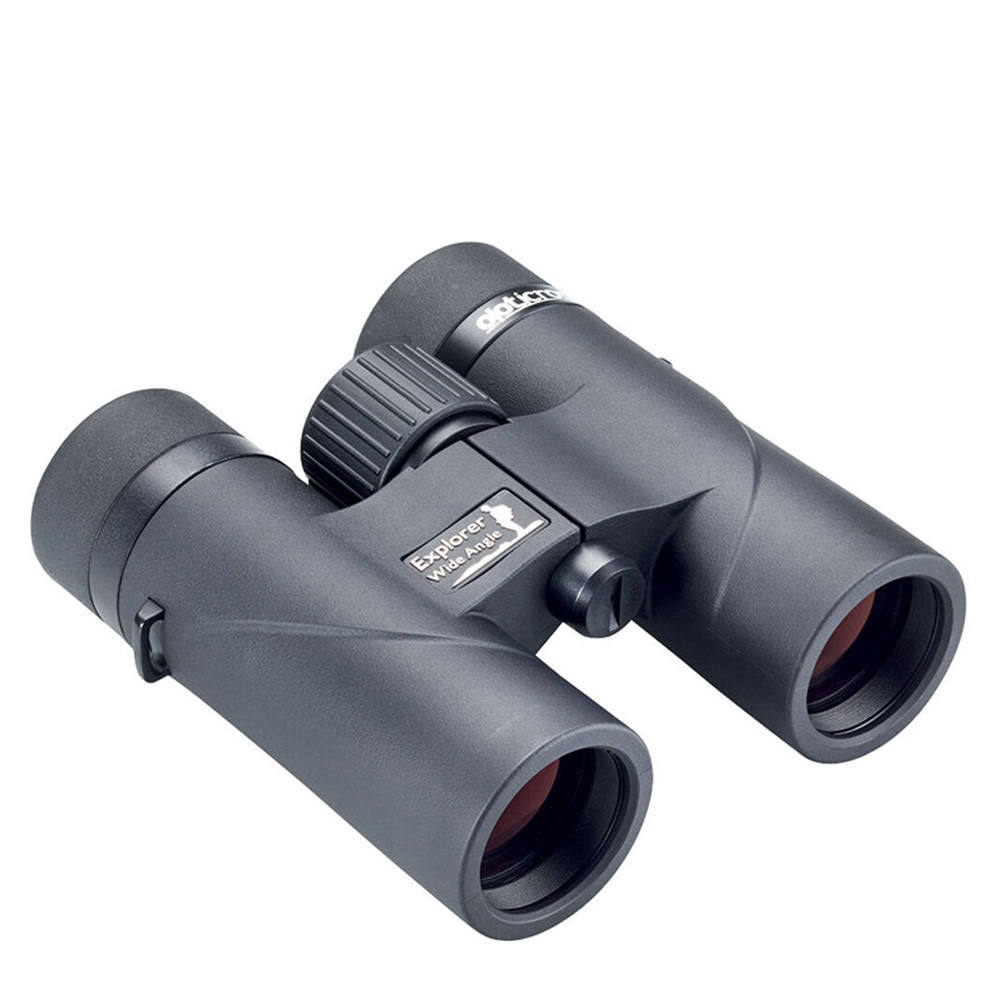
Best for glasses wearers
With a generous 18mm of eye relief, these binos from Opticron produce bright, high-contrast images, making them ideal for wildlife observation.
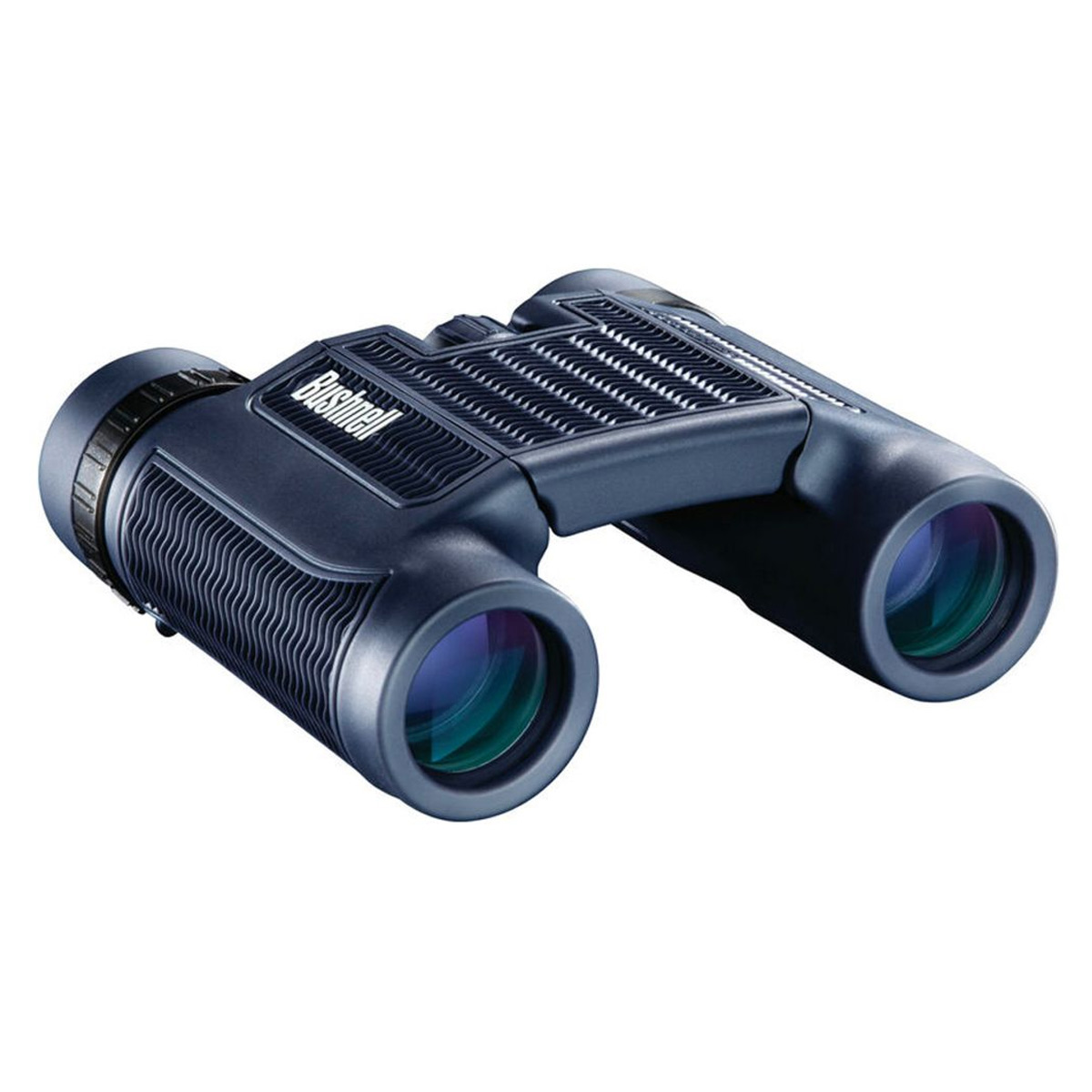
Best waterproof model
With multi-coated optics, BaK-4 glass and a water- and fog-proof design, these compact binoculars are super rugged and durable.
Load the next 3 products ↴
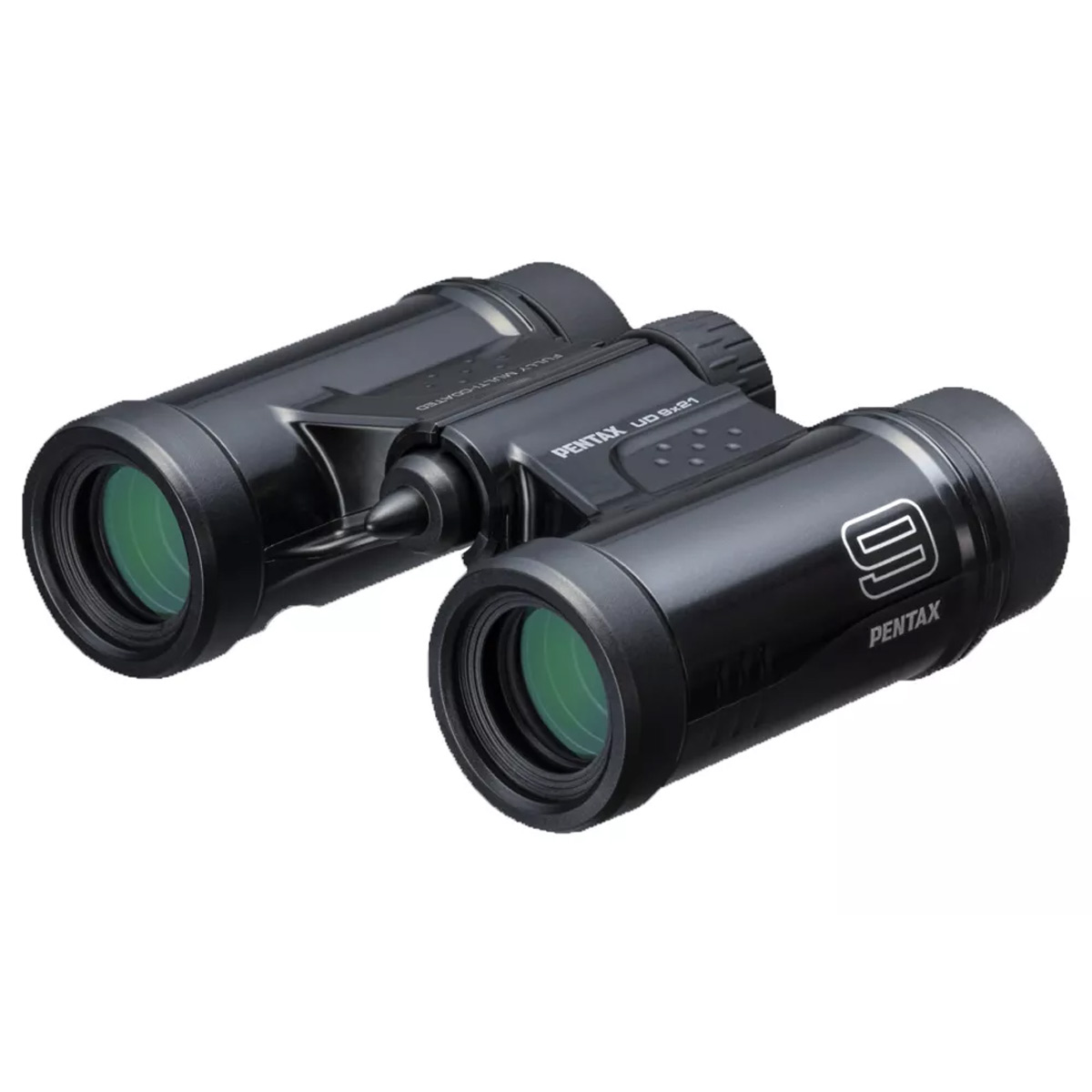
Best styling
We love the design, colors, and light weight of these Pentax UD compact binoculars. They're fully multi-coated, too.

Best for travel
These binos are tiny but still offer fantastic clarity and performance to compete with the big-name brands, with plenty of grip for use in all weathers.
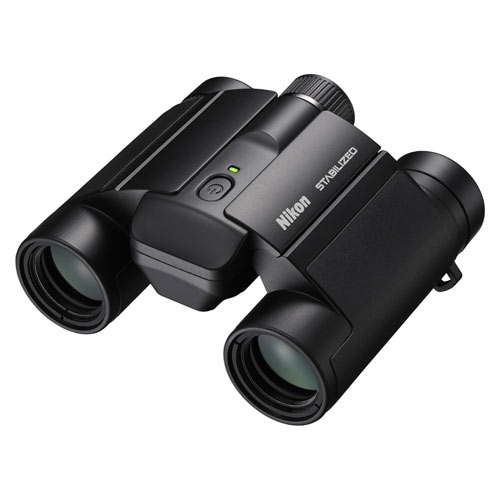
Best for image stabilization
The image stabilization on these Nikons was great when tested on land and water. Plus, there's the added bonus that they're compact and pocketable.
Best compact binoculars we recommend in 2025
Why you can trust Space.com
Best overall


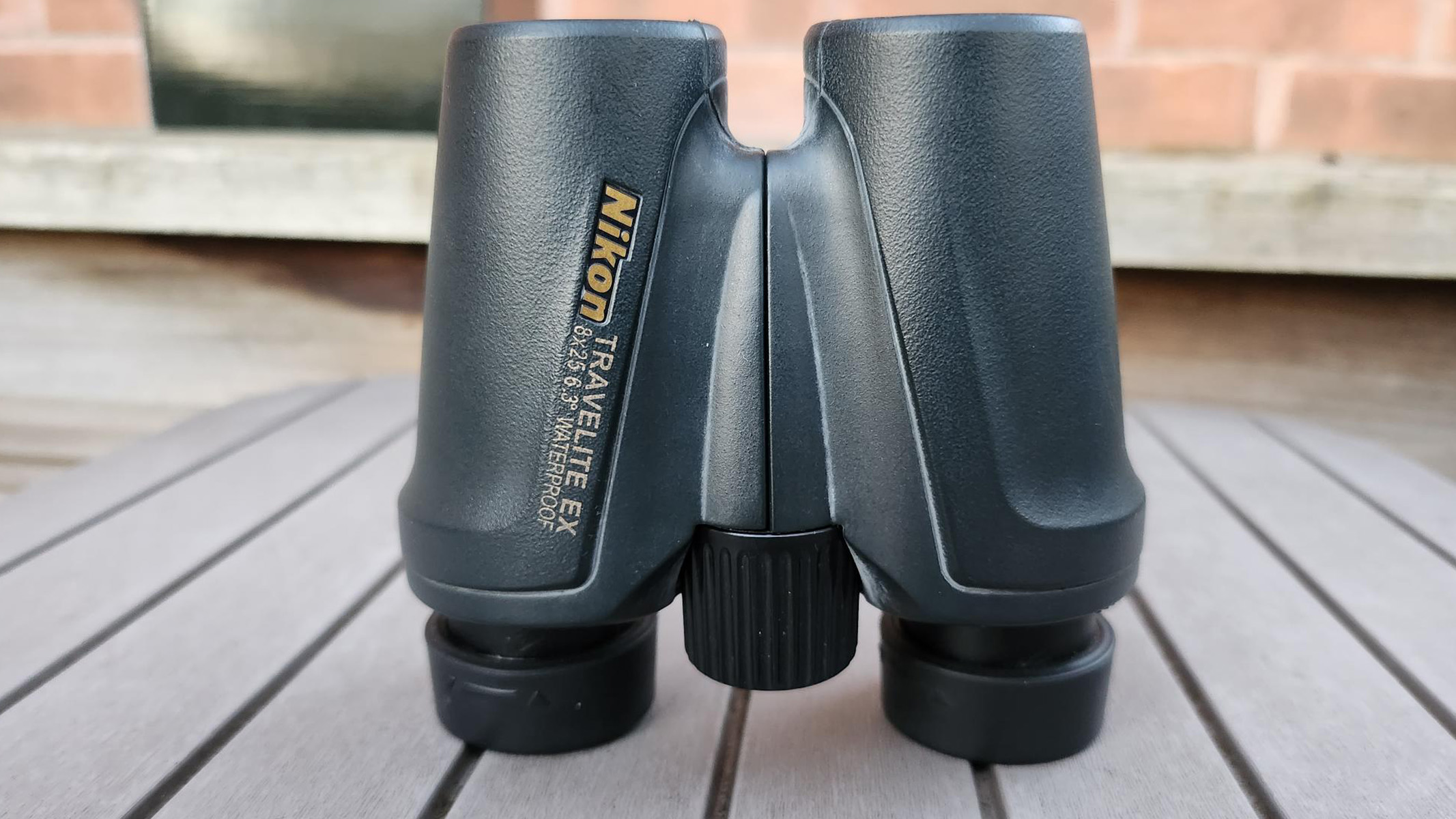


Specifications
Reasons to buy
Reasons to avoid
✅ You're a casual viewer: For a decent grab-and-go pair that will serve you well for casual day- and night-time viewing, these are a good option.
❌ You're a serious skywatcher: If you want to take your stargazing to the next level, you'll likely outgrow them quickly.
🔎 Nikon Travelite EX 8x25: These pocket-sized binoculars are compact, well-made and lightweight, making them a handy accessory, but due to their small 25mm aperture, we couldn't see much celestial detail. ★★★★
If you're a casual binocular user or looking for your first pair of binoculars, the Nikon Travelite 8x25 binos are a fantastic option. They're a quality compact pair from Nikon, and you get a travel case included when you buy them.
Given their small size, the Travelite 8x25 binoculars have a surprisingly wide field of view. In our Travelite EX 8x25 review, we praised the eye relief they offer, which makes them great for glasses-wearers. The eyecups feature O-ring seals, which are nitrogen-filled to prevent fogging, and there's also waterproofing up to a depth of two meters for five minutes. This means if you're using them near a body of water, you don't need to stress too much about accidentally dropping them in (though of course, try not to!).
If you're looking for a pair of binoculars for stargazing, the Travelite 8x25 are up to the job, as long as you're realistic about what you want to see in the night sky. Their 25mm objective lens diameter isn't wide enough to let in lots of light for deep sky viewing, so don't expect to be able to see objects like Saturn's rings — you'll want to look for a bigger set of binoculars for that. But the 6.2-degree field of view is wide enough to see all three stars in Orion's belt or to get a good look at the craters of the moon, so if you're a casual stargazer, you'll be able to get plenty of use here.
- Read our full Nikon Travelite EX 8x25 binoculars review
Attributes | Notes |
|---|---|
Design | Sturdy and durable, with a rubberized coating. |
Performance | Very good contrast when observing bright objects. |
Functionality | Lacks great light-gathering power but has decent night-sky views. |
Best for portability
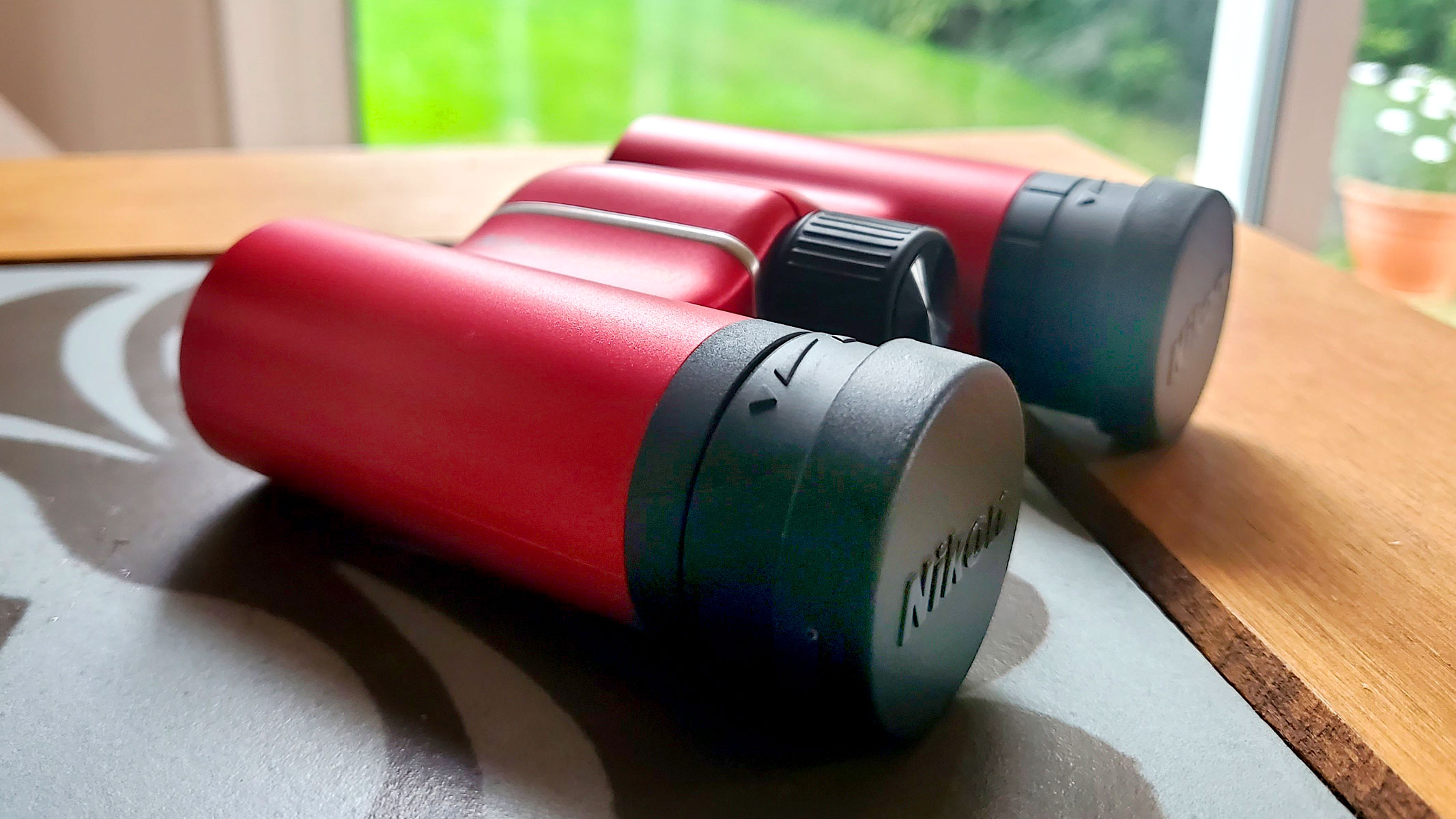

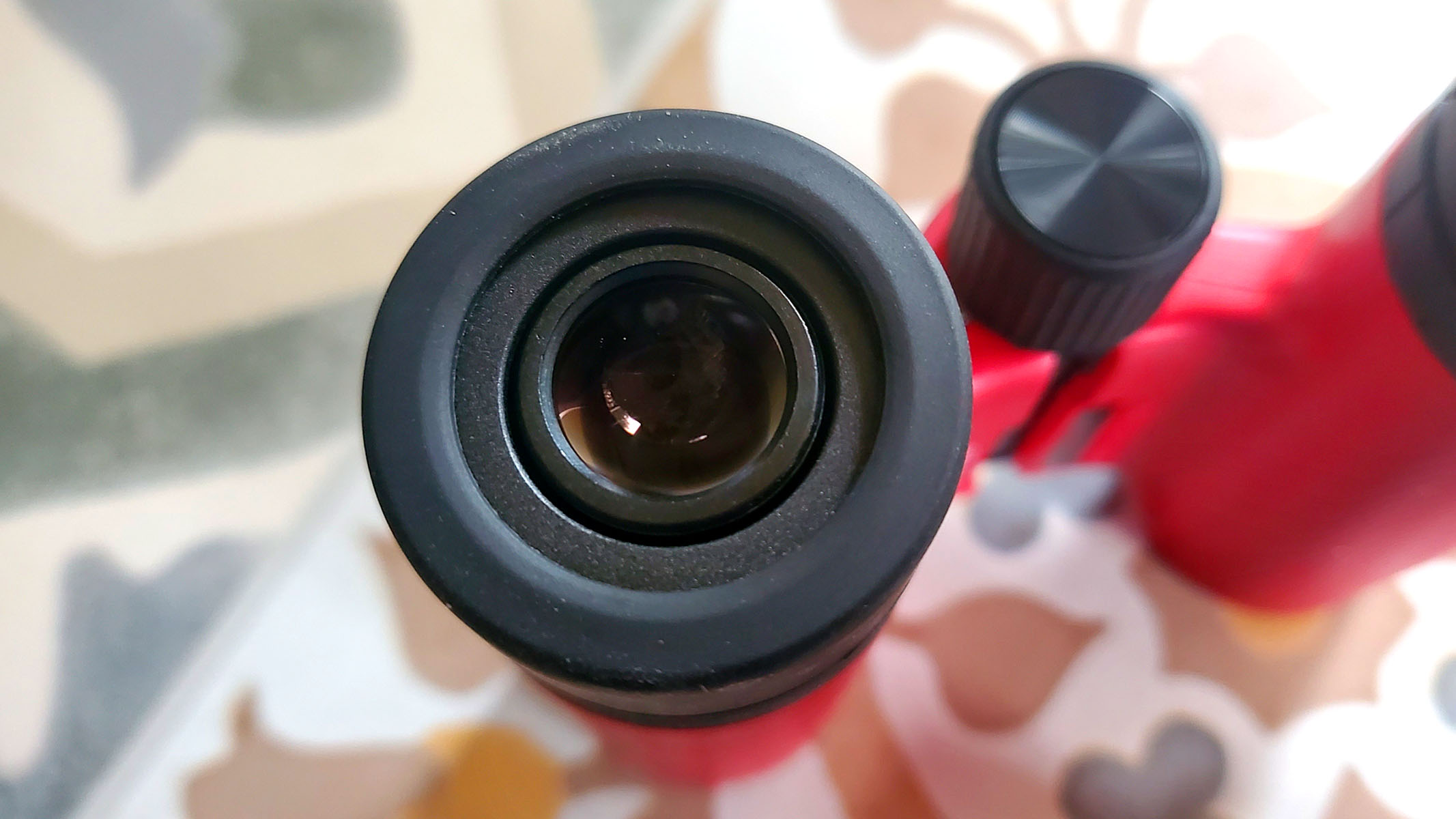
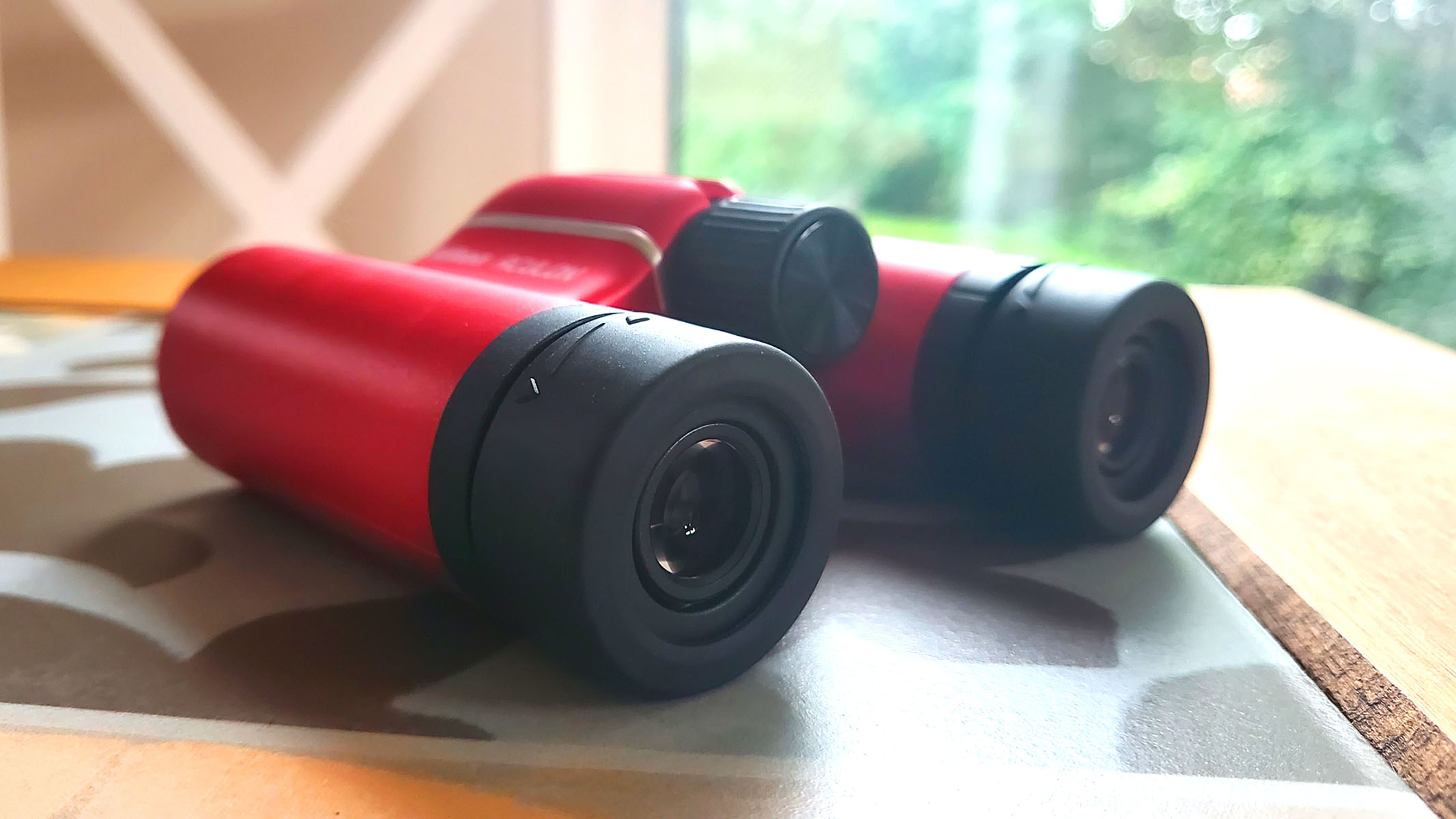

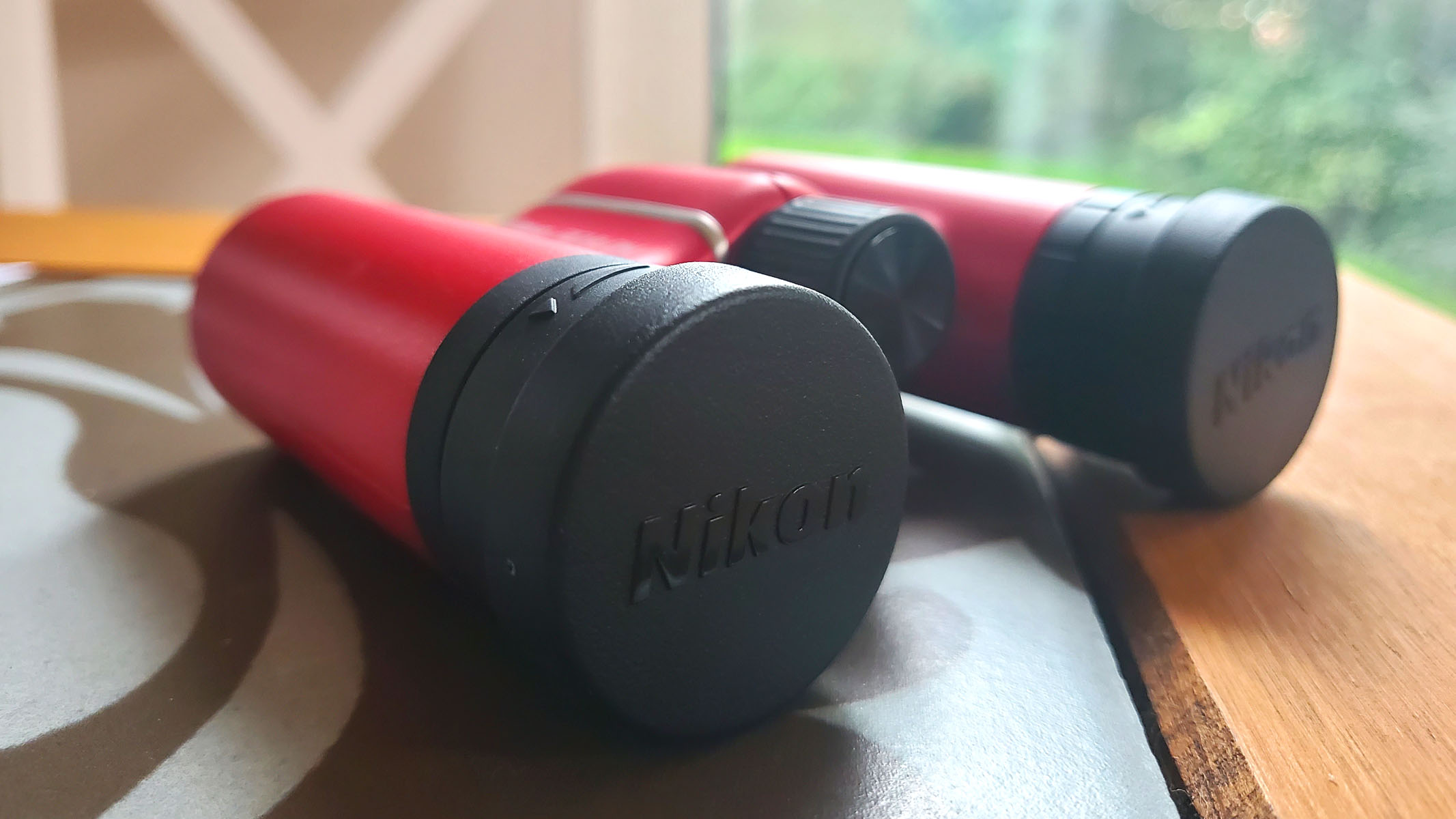

Specifications
Reasons to buy
Reasons to avoid
✅ You want to travel with them: These binoculars are small and lightweight, so they're extremely easy to carry around with you.
❌ You want something for all weathers: They're not waterproof.
❌ You need to wear glasses when using binoculars: The 10.3mm eye relief isn't very glasses-friendly.
🔎 Nikon Aculon T02 8x21: Despite minor flaws, their attractive design, high portability and good optics make them worth considering. ★★★★½
While the Nikon Aculon T02 8x21 missed out on the top spot on our list of the best compact binoculars, these are still one of our favorite sets on the market. Budget friendly, seriously compact and packing in great optics to boot, there's a lot to love about them.
The Nikon Aculon are impressive light too (6.9oz (196g) compared to some similar models. In fact, these binos are some of the lightest on the market, and they'll slip into any pocket or bag just as easily as your smartphone would.
The Nikon Aculon binoculars are surprisingly sturdy, and their body has a rugged build that feels tough enough to withstand the odd bump or rough handling. As they're nitrogen-filled, you won't have to worry about fogging, and although they're not waterproof, they should hold up during a light rain shower.
During our Nikon Aculon T02 8x21 review, we were really impressed with their optics, capable of rendering pin-sharp views of the moon with just a little chromatic aberration along the lunar limb. The focuser is very accurate and allows for minute movements to get your object of interest perfectly in focus, and they also have excellent color fidelity.
The Nikon Aculon have a couple of design drawbacks, though. With only a 10.3mm eye relief, they're not great for people who wear glasses while using binoculars. Also, if you're into stargazing, they might not be the best choice because they don't gather enough light to see fainter celestial objects, and they don't have BaK-4 prisms like some other models do.
Their low cost and durability makes these binoculars a good choice for kids, but the quality of optics on display makes them a great choice for anyone. We love that you can choose their body color from a few different bold options.
- Read our full Nikon Aculon T02 8x21 review
Attributes | Notes |
|---|---|
Design | Lightweight and pocketable. |
Performance | Good optics and accurate focuser. |
Functionality | Not waterproof, bad for heavy downpours. |
Best budget option

Celestron UpClose G2 10x25
Our expert review:
Specifications
Reasons to buy
Reasons to avoid
✅ You want to do some stargazing: They give great low-light results thanks to their higher twilight factor.
❌ You want the highest specs: Budget binoculars don't tend to have the best specs — if that's what you want, you're going to have to part with more cash.
🔎 Celestron UpClose G2 10x25: While they don't have the highest specs, these binoculars offer partially multi-coated lenses and BK-7 glass roof prisms. They're well-priced and come with the reassurance of a limited lifetime guarantee. ★★★★½
Coming in at less than $30, the Celestron UpClose G2 are an absolute steal. Celestron is a brand synonymous with high-quality telescopes and binoculars, so you know you're getting a good quality product even at this low price point.
Measuring just 3 x 2.2 x 4.5 inches (76 x 51 x 114 mm), the UpClose G2 are very sleek and compact, so you can pop them into a pocket or bag and take them just about anywhere. If you're a glasses-wearer, you'll appreciate their fold-down eyecups, too.
Even though they're small and affordable, these binoculars have a surprisingly high twilight factor of 15.8, so they work really well in low light. They're great for stargazing, but versatile enough for any other kind of observation. For example, with 10x magnification and a close focus of just 15 feet, they're perfect for wildlife spotting. We'd suggest going for these binoculars instead of the UpClose G2 8x21, which have a lower twilight factor of 13.
The Celestron UpClose G2 binoculars don't have the best specs of the models on this list, but given their price point, they're practically unbeatable. Sure, they're made of BK-7 glass rather than superior BaK-4 glass, and the lenses are partially multi-coated (as opposed to fully-coated), but these trade-offs are expected for such a budget pair of binoculars, and their optical performance is impressive.
We haven't reviewed the 10x25 yet, but we have reviewed the Celestron UpClose G2 10x50, which we loved for astronomy.
- Discover the cosmos using one of the Best stargazing apps
Attributes | Notes |
|---|---|
Design | Compact with fold-up eyecups. |
Performance | Good in low-light conditions. |
Functionality | Economy BK-7 glass but 10x magnification. |
Best for glasses wearers
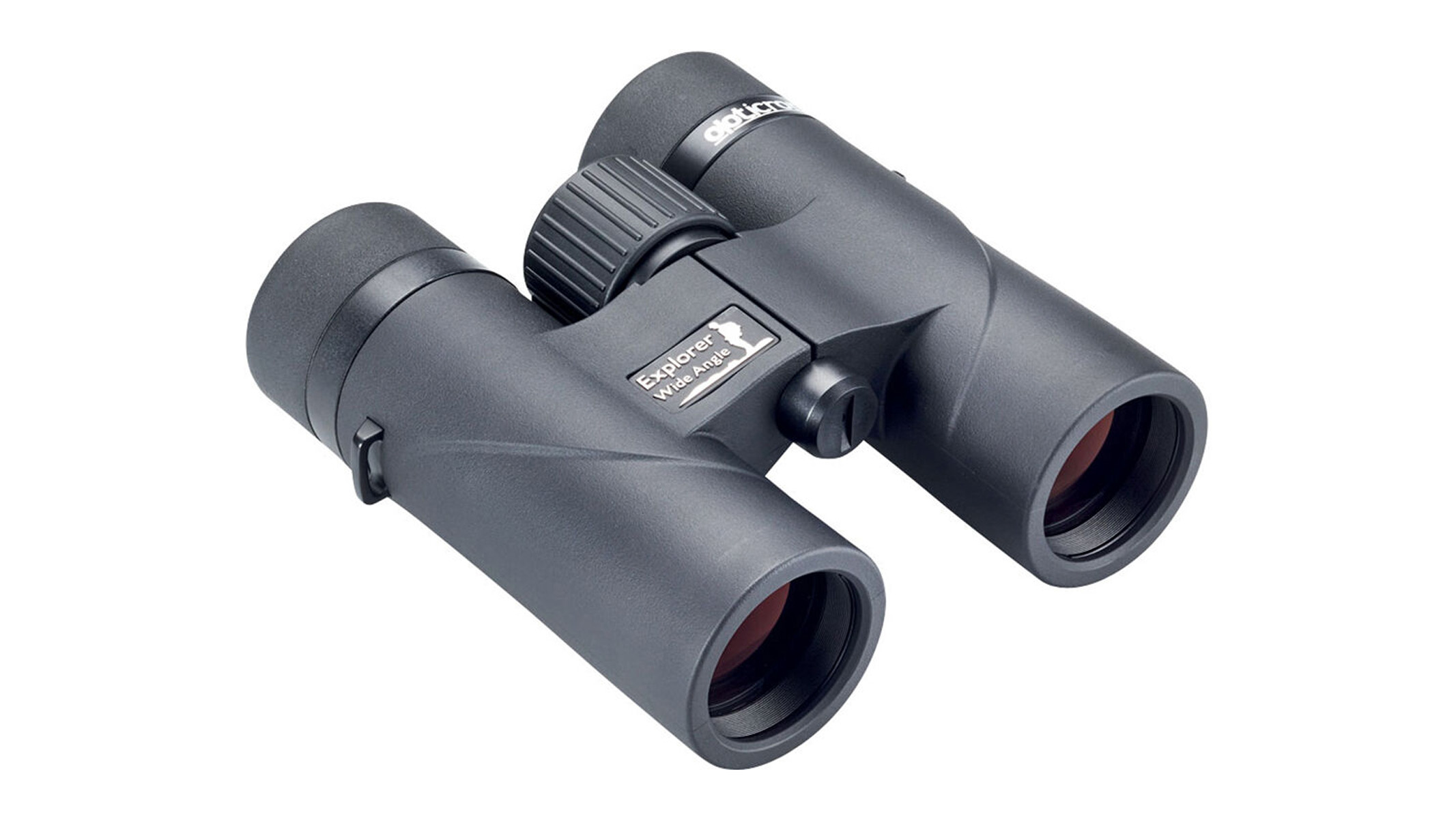
Opticron Discovery WA ED 8x32
Our expert review:
Specifications
Reasons to buy
Reasons to avoid
✅ You wear glasses: They have a generous 18mm of eye relief.
✅ You're a keen wildlife observer: They're very highly-rated for birdwatching or for using on safari.
❌ You want the most lightweight option: If you're concerned about weight, there are lighter options in this guide.
❌ You're on a budget: They're quite expensive for compact binoculars.
🔎 Opticron Discovery WA ED 8x32: They have generous eye relief and produce bright, high-contrast images, although sharpness does drop off at the edges of the frame. ★★★★
The eye relief on a pair of binoculars is a very important specification as it determines how comfortable they will be to use while wearing glasses.
Generally, an eye relief of around 16mm and over is suitable for people who wear glasses. The Opticron Discovery WA ED 8x32 binoculars are the only pair in this guide to have over 16mm, clocking in at a very generous 18mm.
We also recommend the Opticron Discovery WA ED 8x32 for their optical quality. This is a seriously impressive pair of binoculars for the price point, offering bright, sharp images that deliver impressive contrast.
Their 32mm objective lens diameter is amongst the largest on this list, so if you're using them in low light — to view the night sky, perhaps — they'll let in a bit more light than most. They're a decent choice for stargazing, then, as long as you don't expect to see too much detail: The 8x magnification isn't useful for much more than glancing at the stars or observing the moon.
We also appreciate that the Opticron binoculars come with a textured body, guaranteeing a great grip on them. You can easily slip these into your pocket, making them a fantastic companion for any vacation. The only drawback is that they are the most expensive model on this list by a long way.
- Unearth distant celestial objects by reading our guide to the Best telescopes for deep space
Attributes | Notes |
|---|---|
Design | Nicely textured and feels good in the hand. |
Performance | Bright and sharp images. |
Functionality | Very generous eye relief. |
Best waterproof model
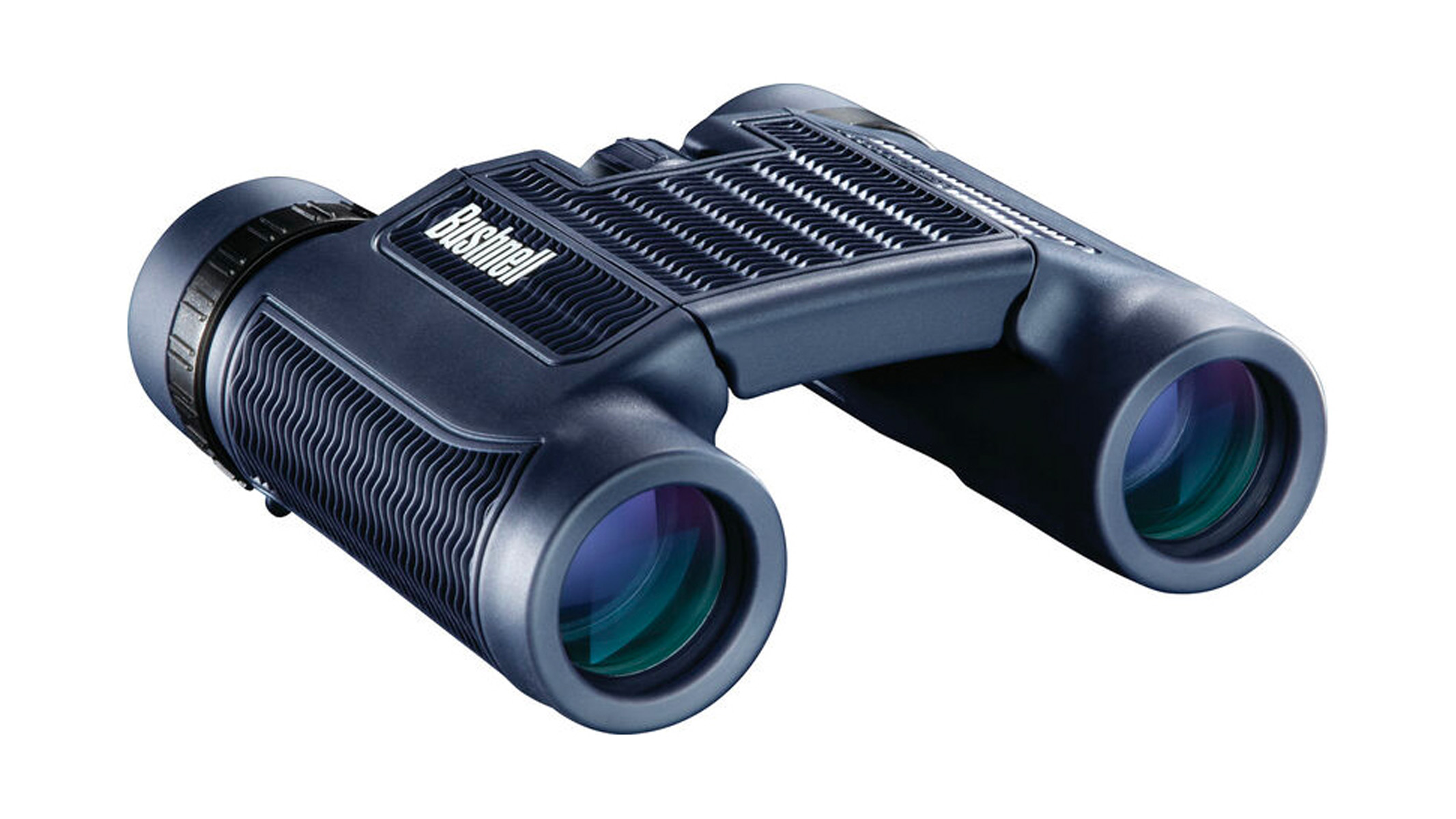
Bushnell H20 8x25
Our expert review:
Specifications
Reasons to buy
Reasons to avoid
✅ You want to use them in all weathers: These binos are hardy, water- and fog-proof, so you can rely on them in any weather.
❌ You wear glasses: The eye relief on these binos isn't the best, so if you wear glasses, there are better options.
❌ You want something pocketable: While they're fine for tossing into your bag, they're probably a little large to fit into your pocket.
🔎 Bushnell H20 8x25: Impressive specifications for a very reasonable price, including partial multi-coating and BaK-4 roof prisms. ★★★½
Considering their affordable price, we were seriously impressed by the specs on the Bushnell H20 8x25 compact binoculars. They feature BaK-4 roof prisms and partial multi-coating, enabling them to provide clear and sharp views, and their 6.9-degree field of view offers up a very decent viewing experience.
Importantly, the Bushnell H20 are easy and comfortable to use. We love that their center focus knob is easy to grip and make adjustments with, even while wearing gloves on a particularly chilly winter day. We're a fan of the rubberized, textured coating that protects them against bumps and improves grip, too.
While they're not exactly pocket-sized at 127 x 101.6 x 69.5mm, these binoculars are still compact and easy to toss into your backpack for outdoor camping trips. They're waterproof and nitrogen-purged to prevent fogging, and Bushnell provides a manufacturer's guarantee for added peace of mind.
However, it's worth noting that the Bushnell H20 8x25 binoculars might not be a great choice for glasses wearers: With only a 12mm eye relief, they aren't very comfortable to use with spectacles, so it might be worth looking for another pair with a deeper relief.
- Save money with these Bushnell binoculars deals
Attributes | Notes |
|---|---|
Design | Hardy and waterproof. |
Performance | Multi-coated and BAK4 glass. |
Functionality | Eye relief a bit short for glasses. |
Best styling
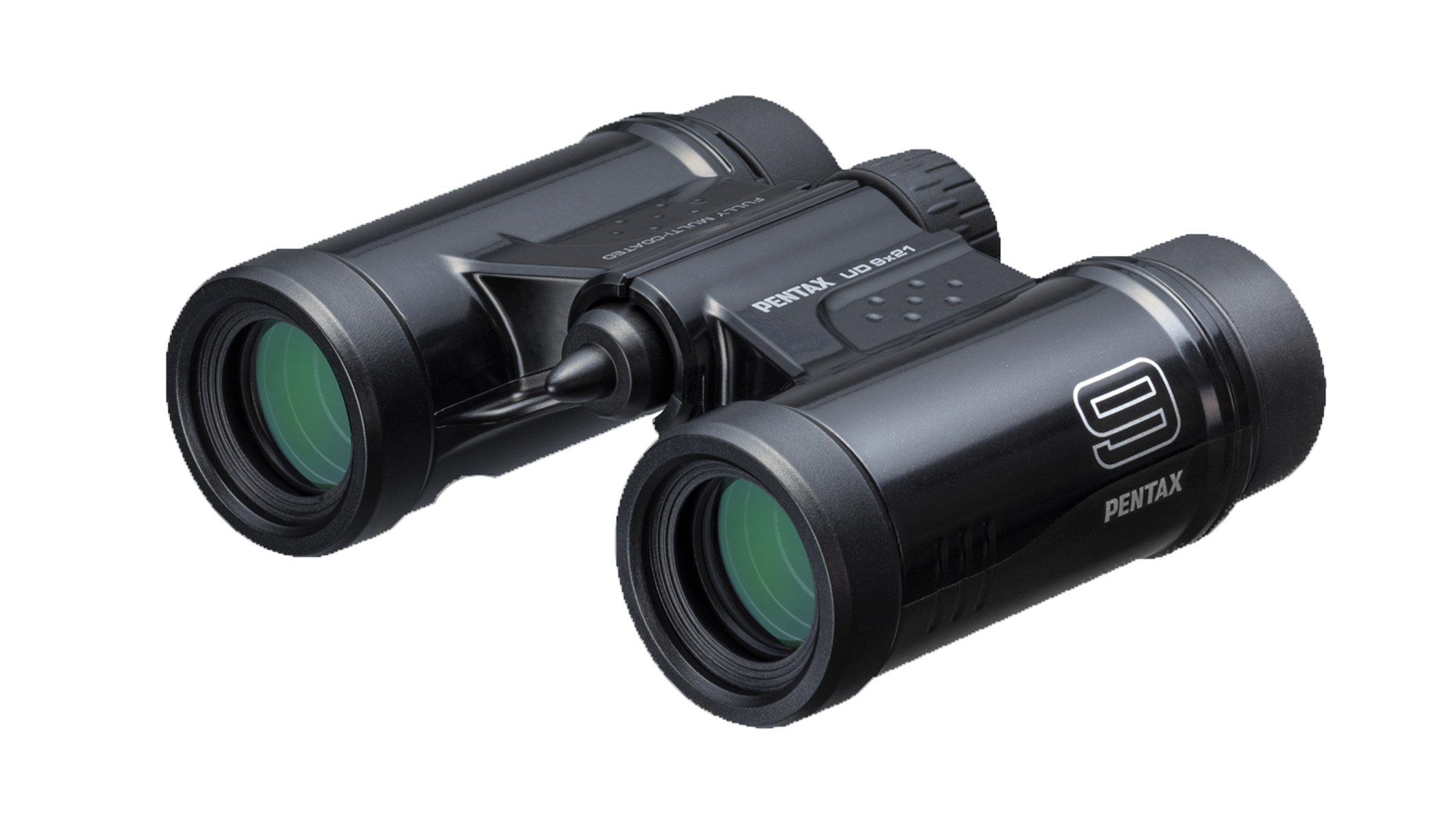
Pentax UD 9x21
Our expert review:
Specifications
Reasons to buy
Reasons to avoid
✅ You want something small: These binos are tiny and lightweight, so they're a great option for traveling.
❌ You want high magnification: While these aren't bad in terms of magnification, there are certainly better options out there if that's what you're after.
🔎 Pentax UD 9x21: If you're struggling to choose between the easier-to-hold 8x magnification or 10x magnification for closer views (especially noticeable on the moon and planets), then here's a compromise — these binoculars offer the best of both worlds with 9x magnification. ★★★½
The Pentax UD 9x21 binoculars offer a great middle ground between 8x magnification, which tends to be easier to hold, and 10x magnification, which offers a more detailed view of the moon and planets. The 9x magnification on these binoculars gives users the best of both worlds, and they come with high-quality optics that are fully multi-coated as well.
If you're looking for super lightweight binoculars, the Pentax UD are a perfect choice. They weigh just 195g, and the plastic frame instead of metal helps keep the weight down, and rubber armor has been replaced with two small thumb rests. They're very easy to carry around, and you'll barely notice they're in your pocket.
Their construction does mean that the Pentax UD 9x21 are perhaps not as tough and hard-wearing as some other options on this list, so they're not be the best choice of you're thinking of buying compact binoculars for a child. Given their size, however, we're impressed with their performance.
The Pentax UD 9x21 binoculars provide a six-degree field of view, which is decent, but not as wide as some other compact binoculars. There's also a 10x21 version, though we suggest going for the 9x21 because it has better eye relief and comes with multi-coated lenses, which make the images clearer.
We like the focus ring on these binoculars, however: It's very user-friendly, with just two turns covering the entire focus range. It's also worth noting that, even though they're so compact, they still come with a tripod mount allowing you to fix them in place if you wish. It's a great option if you want to share specific views with a group or with younger users — but you'll need to purchase an adapter separately if you want to use it.
Making the Pentax UD 9x21 stand out from the crowd is the range of bold colors the binoculars are available in: You can pick them up in orange, lime green and hot pink. It makes a welcome change from plain old black binoculars if you want to inject a bit of fun into your viewing!
- Complement your binoculars with one of the Best telescopes
Attributes | Notes |
|---|---|
Design | Lightweight plastic build with fun colors. |
Performance | Large and accurate focus wheel. |
Functionality | Includes a tripod mount. |
Best for travel
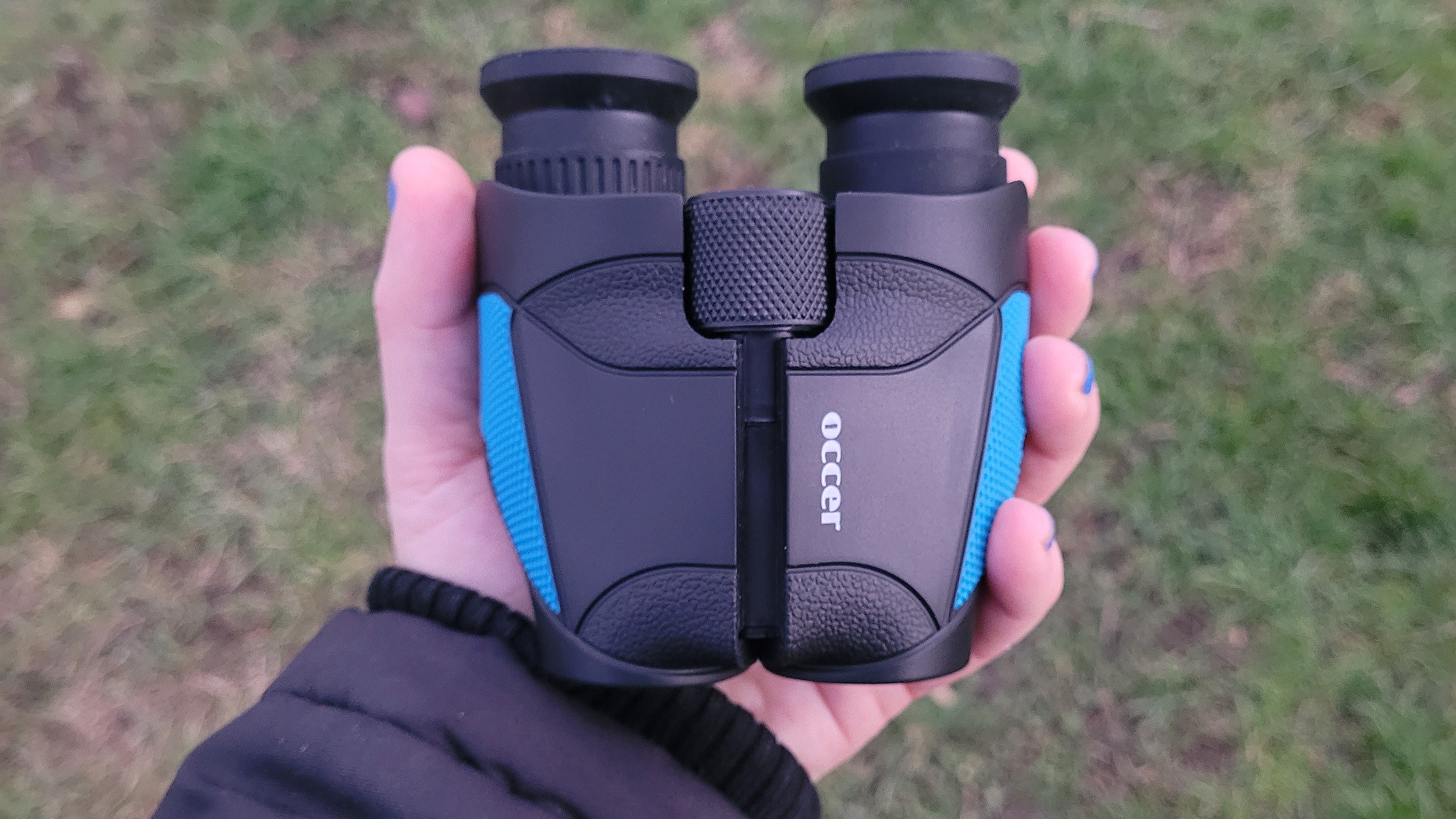
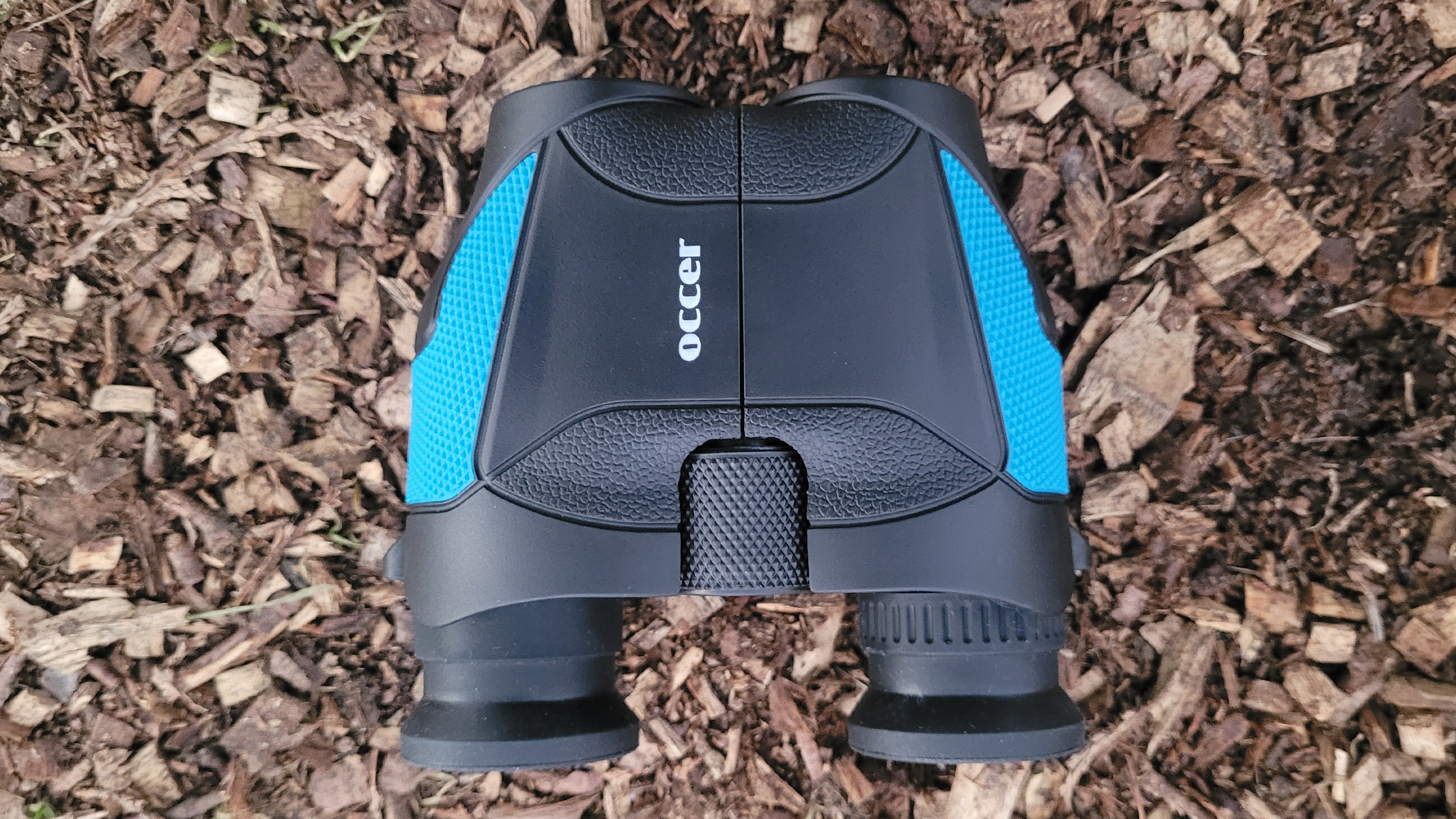
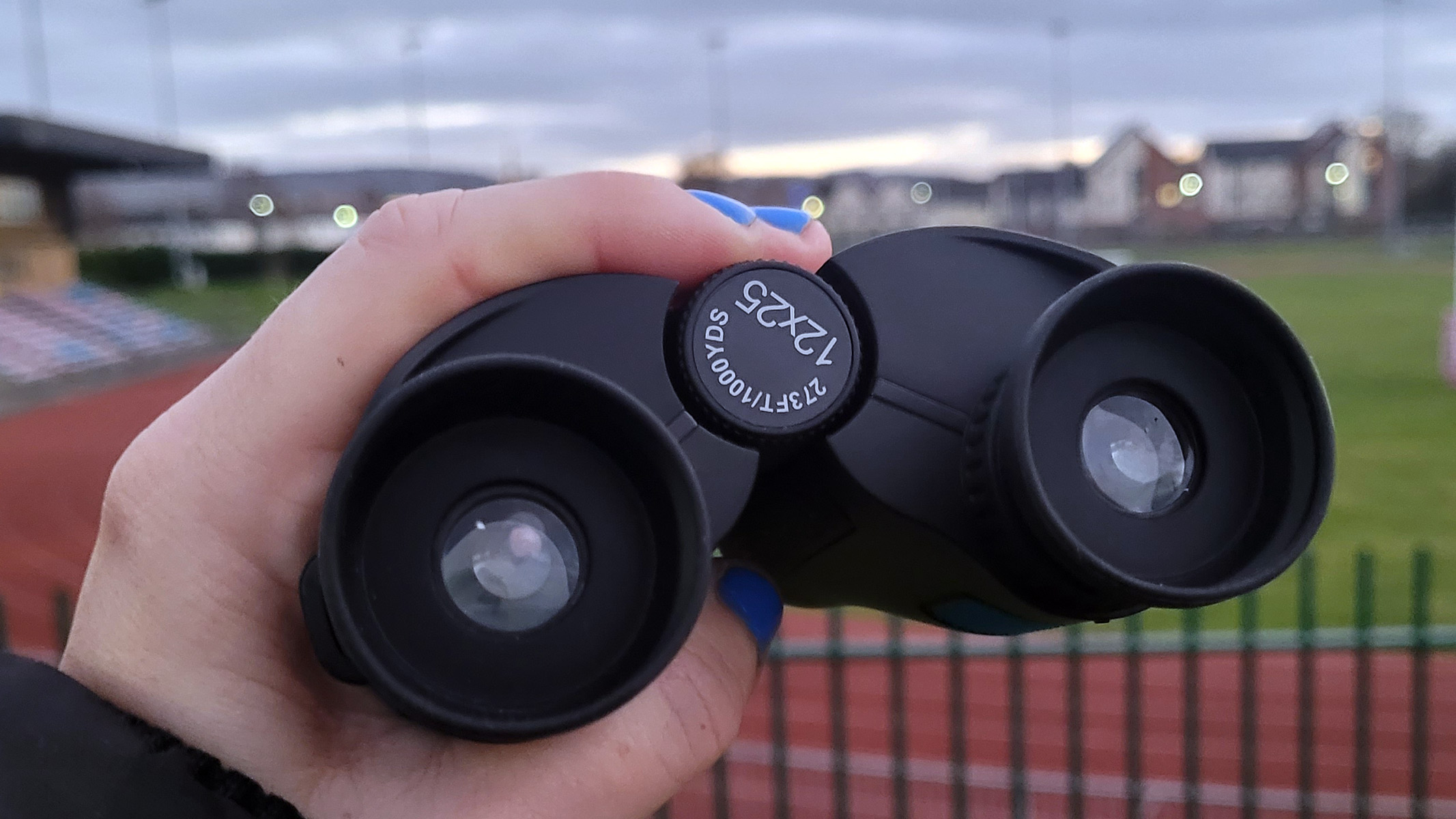

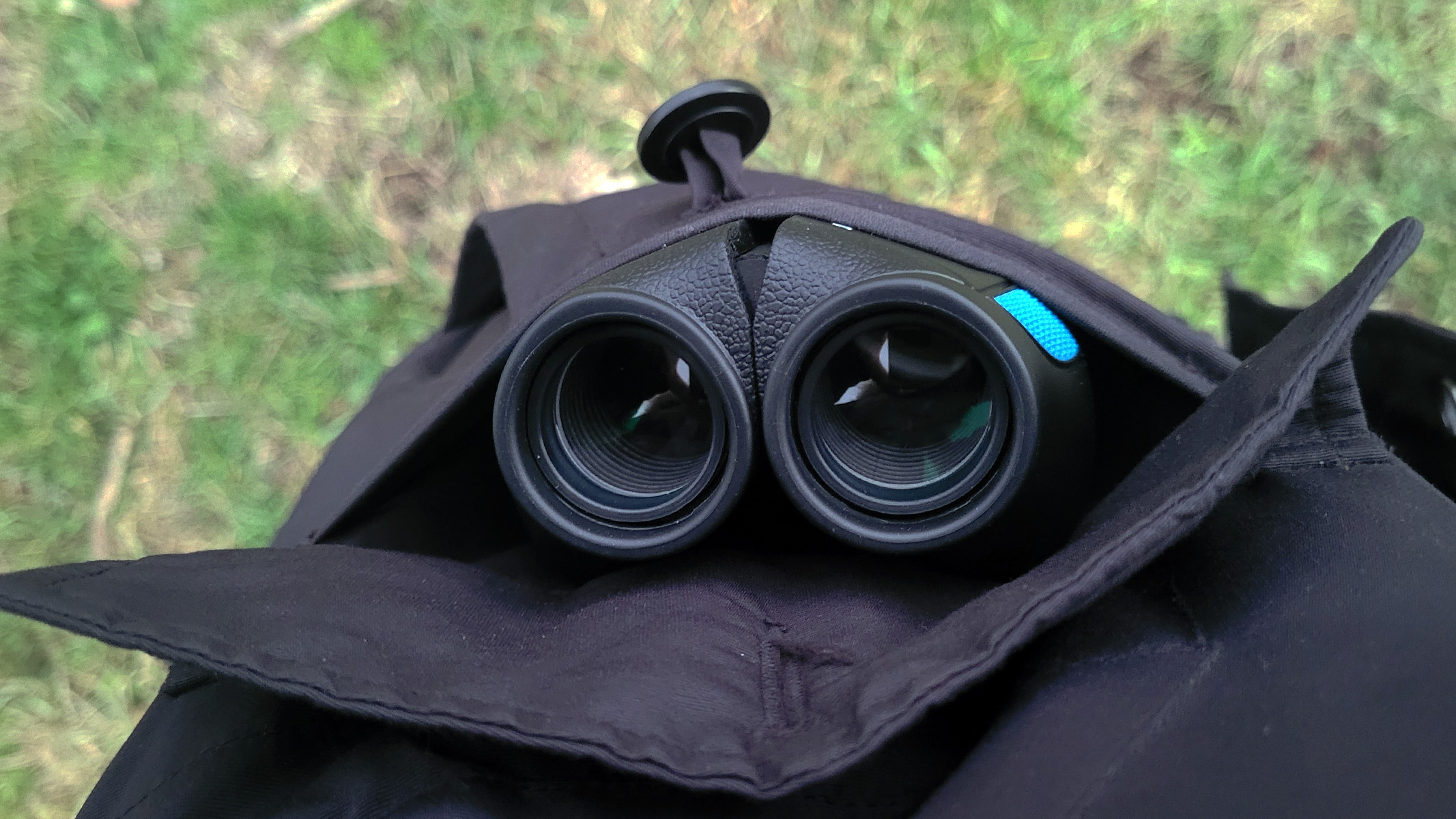
Specifications
Reasons to buy
Reasons to avoid
✅ You want to take them everywhere: They're incredibly small and lightweight, perfect for hiking or camping trips.
❌ You wear glasses: They have short eye relief, which is not ideal if you wear glasses.
❌ You want to use them in all weathers: Although they do claim to be waterproof, we weren't convinced. They'd be fine for light rain, but use them at your own risk.
🔎 Occer 12x25: These binoculars offer surprisingly good quality views considering their compact design. They're ideal for keeping in your pocket, and would suit children and small hands. ★★★½
Occer may not be as well-known a brand as the likes of Nikon or Celestron, but they've made a strong first impression in the binoculars scene. The Occer 12x35 compact binoculars are an excellent choice for anyone looking for a travel-friendly pair: They're only 110 x 50mm in size, making them easy to fit in any pocket.
But it's not just their size that impresses. In our Occer 12x25 compact binoculars review, we were pleasantly surprised by the optical quality on offer, highlighting their brightness and sharpness. We found they even had less chromatic aberration than some better-known competitors. They're only let down somewhat by poor quality packaging, but that's not exactly a dealbreaker.
However, it's worth noting that the Occer 12x25 compact binoculars probably aren't the best choice if you're looking to primarily use them for stargazing. You might get decent enough views of the moon, even seeing details of its craters, but beyond that you'll find these binos don't let in enough light for serious astronomy.
Unfortunately, they don't include lens caps for the objectives or covers for the eyepieces. This might make it challenging to protect them, especially if you're carrying them in a pocket with keys or other items that could scratch the lenses. We also found that the eyecups fold down too easily when you apply pressure while using them, which is a bit of a design flaw.
That said, for the price, the Occer 12x25 would make a good pair for general use like sports or nature observation, and they'd be a great choice as an affordable kid's pair.
- Read our full Occer 12x25 compact binoculars review
Attributes | Notes |
|---|---|
Design | Lots of texture provides grip. |
Performance | Bright and colorful views. |
Functionality | Short eye relief. |
Best for image stabilization
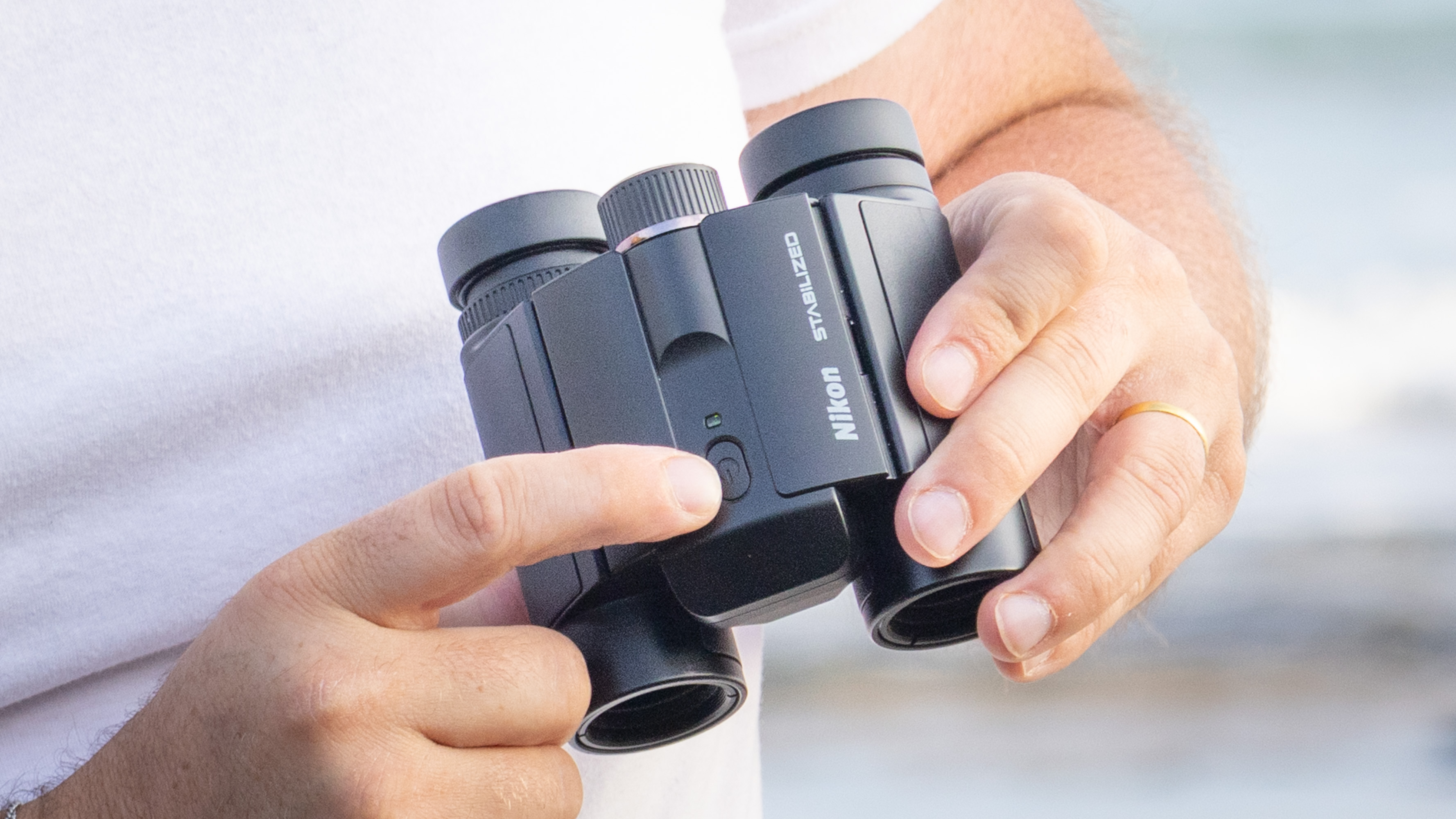
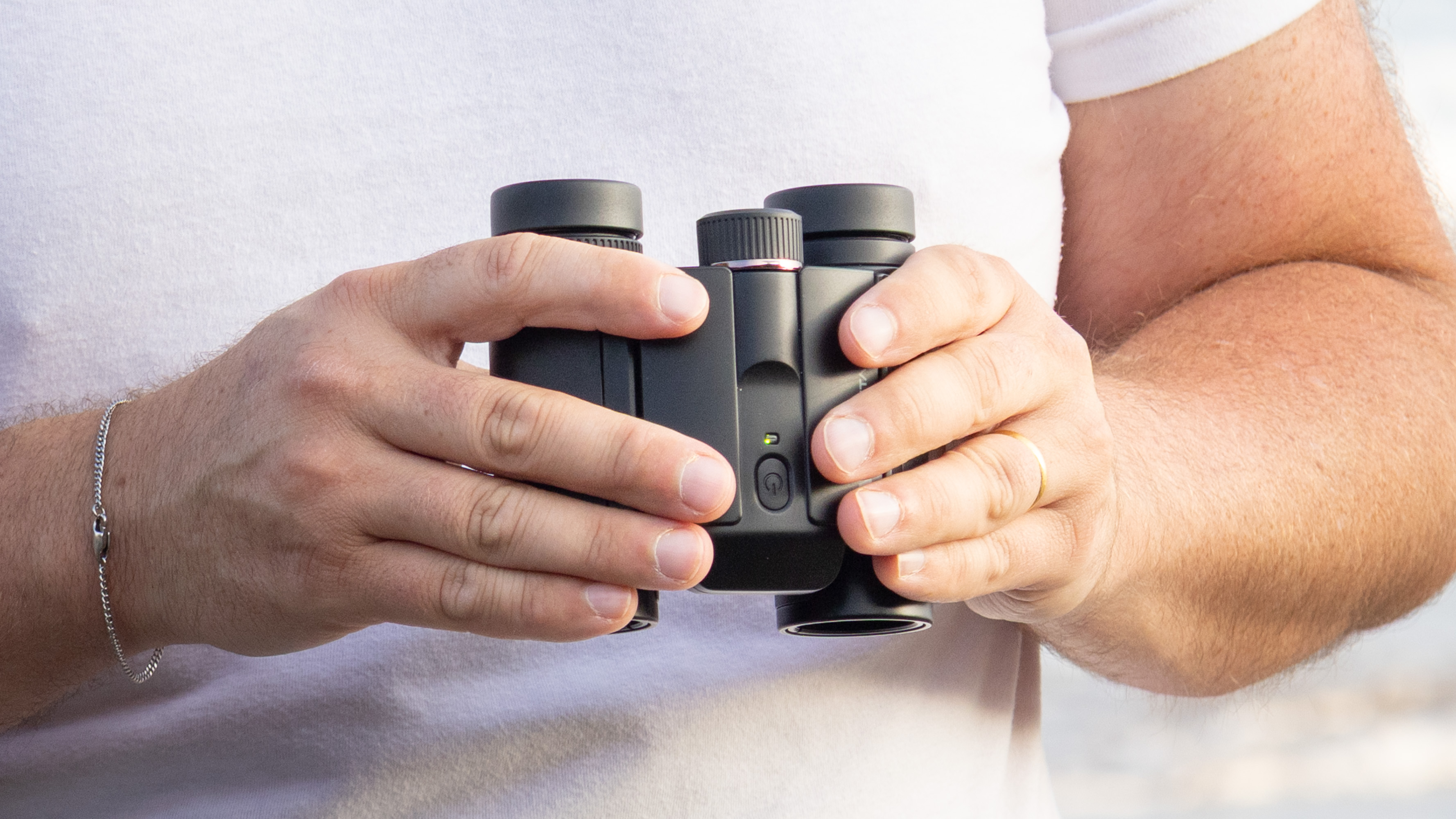

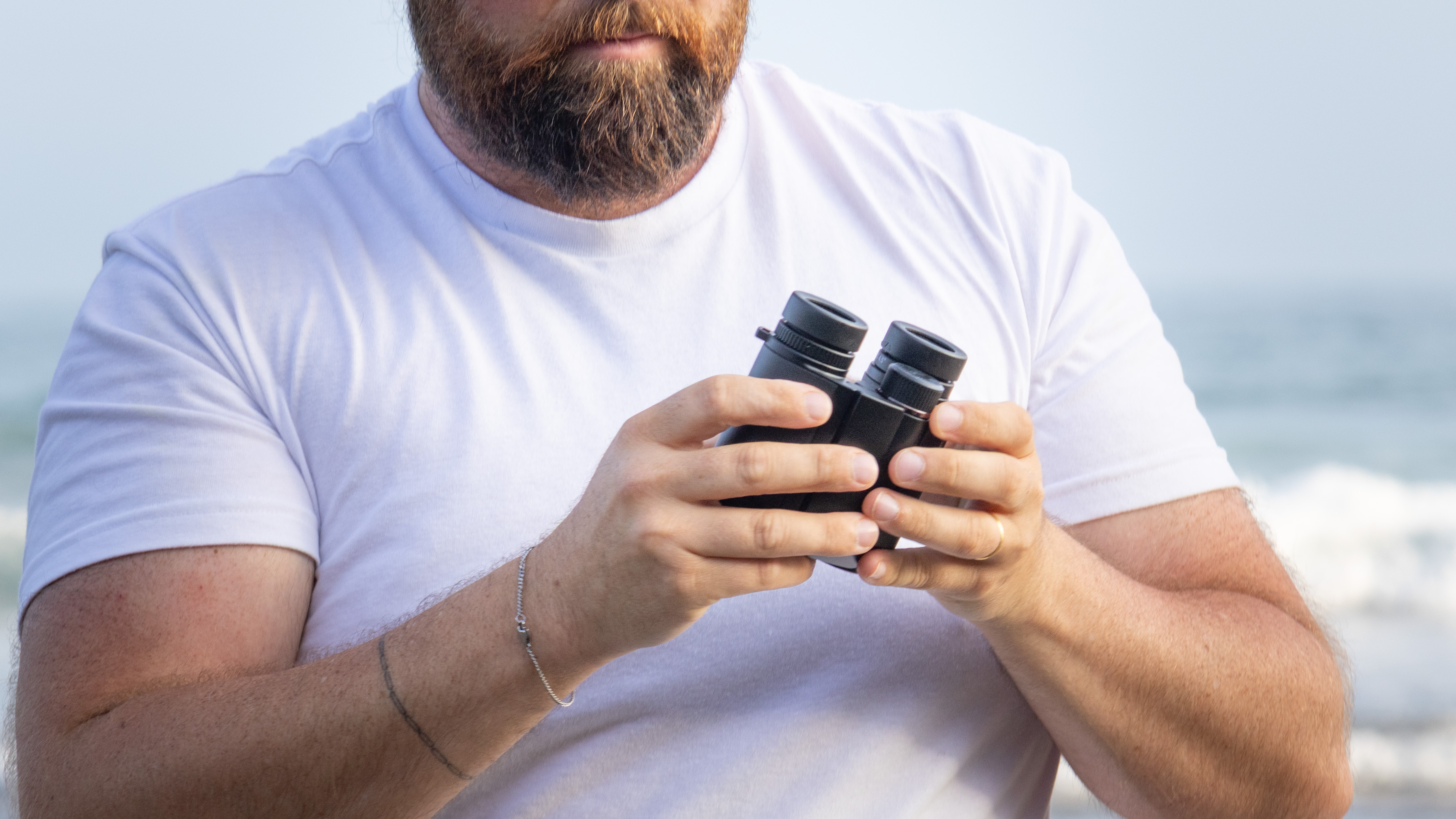

Specifications
Reasons to buy
Reasons to avoid
✅ You want good image stabilization: These binoculars' image stabilization performed well in all of our tests for such a compact pair.
❌ You need a waterproof pair: These binoculars performed well in light showers but as they are not waterproof, we can't guarantee they'll perform as well in heavier rain.
🔎 Nikon Stabilized 12x25 S binoculars: Not only are these a compact pair of binoculars but they offer fantastic optics thanks to their image stabilization, bringing them comparably close to larger binoculars. ★★★★★
During our full Nikon Stabilized 12x25 S binoculars review, we tested the image stabilization of these Nikons on land and water and found it to be great. It's easy to engage with a button on the top of the binoculars. With an auto shut-off of 60 minutes, Nikon argue this helps to save power, which makes sense when the IS is battery powered with two AA batteries. This gives approximately 12 hours of IS usage.
In our full Nikon Stabilized 12x25 S binoculars review, we said these Nikon binoculars were one of the "best small binoculars I’ve ever tested and I highly recommend them for stargazing." While observing the night sky, common constellations were spotted in much more detail than you can get with the naked eye and we even managed to observe M31 (Andromeda galaxy) and M42 (Orion nebula). Not bad for a compact pair of binoculars. While they're good for stargazing, the image stabilization really helps here and their compact size makes them ideal for carrying around with you on the off chance you can get some night sky watching in.
The views aren't disappointing either — the center is sharp but the edges are softer which is to be expected. Plus, the views were darker than what you can see with the naked eye but this was mainly an issue during the day and didn't impact our ability to skywatch too much. Regardless, we still think these are a great pair of compact binoculars, especially considering they offer image stabilization.
- Read our full Nikon Stabilized 12x25 S binoculars review
Attributes | Notes |
|---|---|
Design | Lightweight and pocketable |
Performance | Great and easy to engage image stabilization |
Functionality | IS battery powered, ideal for travel |
Compact Binoculars FAQ

Jase Parnell-Brookes is the Managing Editor for e-commerce for Space and Live Science. Based in the UK, they are also an award-winning photographer and educator winning the Gold Prize award in the Nikon Photo Contest 2018/19 and named Digital Photographer of the Year in 2014. After completing their Masters degree in 2011 and qualifying as a teacher in 2012, Jase has spent the last two decades studying and working in photography and publishing in multiple areas, and specializes in low light optics and camera systems.
Which compact binoculars are the best?
We think the Nikon Travelite EX 8x25 are the best compact binoculars overall, but the perfect model for you depends on your needs.
The main things to consider when shopping for compact binoculars are the numbers in their name: Magnification — usually 8x or 10x, sometimes referred to as power— and the diameter of the objective (front) lenses.
Because compact binoculars are small and light, it's easier to hold them still, so you won't need to worry about higher magnification causing wobble, negating the need for a tripod. Remember, though, that lower-power binoculars will give a brighter image, making faint objects such as nebulas more visible.
- Related: How to hold binoculars steady
When is Amazon Prime Day Big Deals Days in October?
Tuesday Oct. 7 and Wednesday Oct. 8, ending at midnight. Check out our Prime Day hub, where we will publish all of the best deals.
What size binocular lens should I buy?
Overall, it's best to go for the largest lens diameter you can get. Bigger lenses mean more light-gathering power and thus better views for you. Compact binoculars tend to have objectives in the 20-25 mm range; even the largest of compact models will collect only a quarter as much light as a pair of conventional 50 mm binoculars. We don't recommend compact binoculars with a zoom feature, as this is simply asking too much of the smaller objective lenses on this type of instrument.
What type of compact binoculars should I get?
Compact binoculars are usually roof prism types, as this arrangement provides straight tubes and lends itself to foldability. It is rare to find conventional Porro prism compact binoculars, but some use the reverse-Porro arrangement, resulting in objective lenses closer together than the eyepieces. Check what type of glass the prisms are made from; the best you can get is BaK-4, while budget binoculars often use BK-7 or K9 (these two are more or less equivalent).
What's the difference between multi-coated or fully coated optics?
Lenses will be described as coated, multi-coated, or fully multi-coated. The best will be fully multi-coated with phase coating on the prisms. The best will also be nitrogen-filled to eliminate the risk of internal fogging. Some compact binoculars are waterproof or water-resistant, which is always a good idea for use in all weather and gives the user extra peace of mind.
Which brand of binoculars are best?
We've named the Nikon Travelite EX 8x25 as our best overall, but the Nikon Aculon T02 came a very close second. Sometimes the comfort of a trusted, known brand that offers a warranty is worth paying that little bit extra for. That said, you will see a couple of models in this guide that are lesser known but that we would recommend as good-value-for-money after testing them.
When shopping online, you may come across lots of lesser-known brands offering incredible bargains but, as ever, beware. Products are not always described accurately, particularly when sold by traders on third-party websites, and we advise treating claims with suspicion. Ask yourself if you believe these very cheap binoculars have all the features they claim or whether some of the claims might be lost in translation.
Update log
Editor's note: Updated 09/03/25 by adding in information regarding the Corn Moon and blood moon on September 7 to the introduction as well as information about the new moon on September 21. Added the Nikon Stabilized 12x25 S binoculars as the best for image stabilization.
How we test the best compact binoculars
To guarantee you're getting honest, up-to-date recommendations on the best compact binoculars to buy here at Space.com, we make sure to put every binocular through a rigorous review to test each instrument fully. Each telescope is reviewed based on many aspects, from its construction and design, to how well it functions as an optical instrument and how it performs in the field.
Each pair of binoculars is carefully tested by our expert staff or knowledgeable freelance contributors who know their subject areas in depth. This ensures fair reviewing is backed by personal, hands-on experience with each binocular and is judged based on its price point, class and destined use. For example, comparing a pair of 25x100 mammoth binoculars to a compact pair of 8x25s wouldn't be appropriate though each binocular might be the best pick in their own class.
We look at how easy they are to operate, whether the length of eye relief can be adjusted for spectacles wearers (the longer the better) if a binocular comes with appropriate accessories (lens caps, neck strap, cleaning cloths) or carry bags and also make suggestions if a particular set of binos would benefit from any additional kit to give you the best viewing experience possible.
With complete editorial independence, Space.com are here to ensure you get the best buying advice on binoculars, whether you should purchase an instrument or not, making our buying guides and reviews reliable and transparent.
Today's best deals
Breaking space news, the latest updates on rocket launches, skywatching events and more!

Jase Parnell-Brookes is the Managing Editor for e-commerce for Space and Live Science. Previously the Channel Editor for Cameras and Skywatching at Space, Jase has been an editor and contributing expert across a wide range of publications since 2010. Based in the UK, they are also an award-winning photographer and educator winning the Gold Prize award in the Nikon Photo Contest 2018/19 and named Digital Photographer of the Year in 2014. After completing their Masters degree in 2011 and qualifying as a teacher in 2012, Jase has spent the last two decades studying and working in photography and publishing in multiple areas, and specializes in low light optics and camera systems.
- Brandon SpecktorLiveScience senior writer
- Chris McMullenContributing Writer
- Kimberley LaneContributing writer
- Tantse WalterContributing Writer
- Kim SnaithFreelance contributor
- Harry BennettE-commerce Staff Writer
